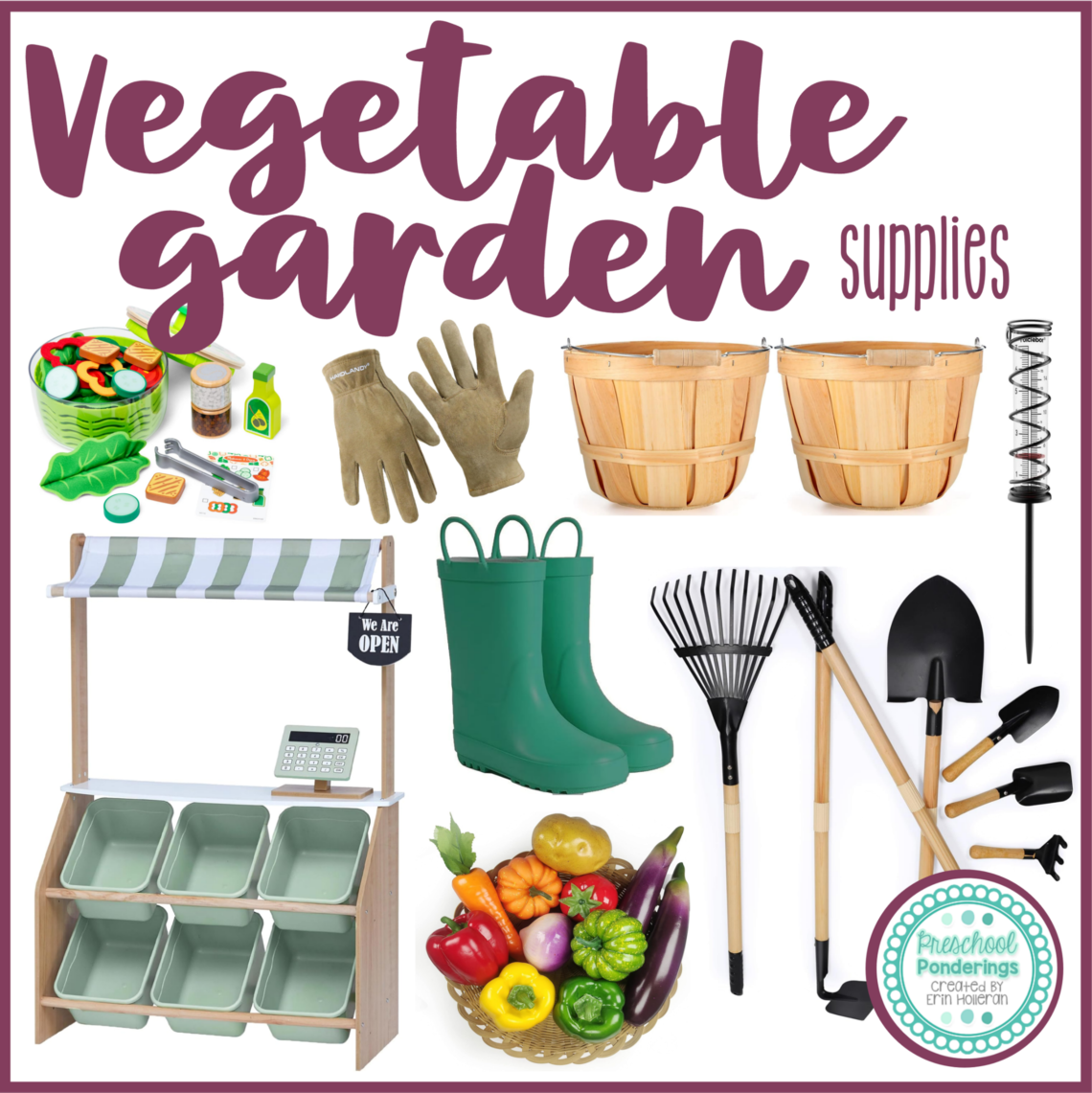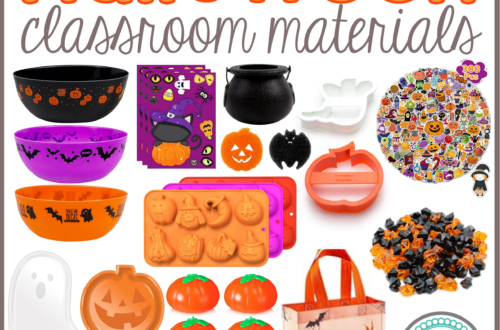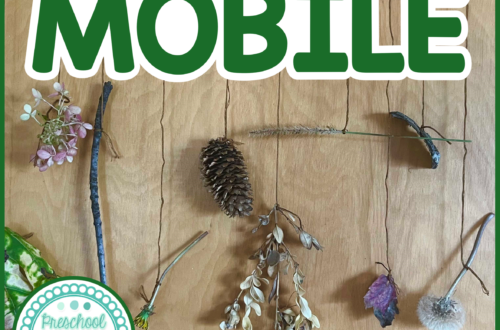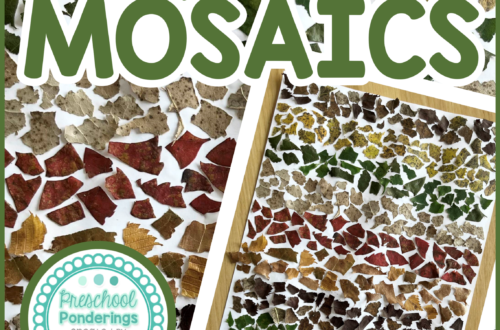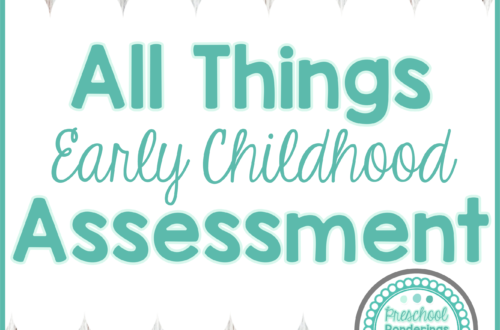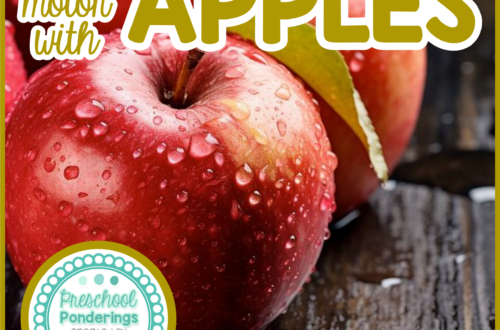project work
-
Preschool Vegetable Gardening Unit
Are you looking for some supplies to support your vegetable gardening unit? I’ve got you covered! Here are my favorite items for preschool gardening projects. All links are affiliates. Melissa and Doug Salad Spinner Play Set Kids Leather Gardening Gloves Bushel Baskets Rain Gauge Gardening Tools Kids Rain Boots Artificial Vegetables Farmer’s Market Stand
-
Cloud art!
When it comes to art, I believe in giving children the materials and letting them do their thing. This is especially true if an art project also happens to be related to the project that we’ve been working on because I want them to have the opportunity to express their own understanding of the topic. I try to anticipate the materials that they will want, and I will often ask them to help me create a list a couple of days before we do the project so that I can make sure I have the items that they want or need. Here are some of the things that I collected…
-
Ideas for Observing Trees with Preschoolers
Trees offer great opportunities for seasonal observations because; They are readily available and can often be observed from inside the classroom simply by looking out the window. They offer obvious visual examples of seasonal changes. They can easily be revisited over an extended period of time. Observing trees is completely free. Start your observations by having your class help choose a tree that they want to make “their tree.” Check on the tree every couple of weeks. During some points throughout the year the changes will happen more rapidly, revisit the tree more often during these periods. As you engage the children in observations, consider doing some of these activities:…
-
Informal assessments: What do your students know?
Before you can start any kind of project or theme exploration it is important to know what your students already understand about that particular topic. You don’t want to teach them things they already know, but you do want to be able to build upon the current knowledge and understanding. So how do you find this information out? There are a number of strategies that you can use, and all are considered informal assessment. Ask them. This seems really simple, but, have you ever gone up to a preschooler and said “What do you know about the farm?” You probably get a blank stare, not because they don’t know anything,…
-
Starting a child-led apple investigation
It’s almost that time of year – time to explore all things apples and pumpkins. I don’t know what it is about apples, but we can’t seem to make it through a school year without some kind of apple activity or snack. I’m all for exploring these fall favorites, but lets let the children determine what they want to learn. The best way to start a child-led investigation is incredibly easy; just put some apples on a table and see what happens. I do suggest a number of different kinds and colors of apples, because these will lead to a number of different conversations. Young children are curious about EVERYTHING,…
-
Documentation Display Ideas
Documentation panels are great for so many different purposes, but it can be really difficult to find enough space to display all of them and your students’ artwork, especially when you don’t have a ton of wall space in the classroom. Over the years I’ve gotten pretty creative when it comes to displaying documentation, and of course, one of my favorite places for inspiration is Pinterest. Here are some of the most innovative display ideas (many of these are for photos, but could easily be modified to accomodate artwork, work samples, or panels) that I’ve found – I especially love documentation displays that could tie in with the project itself,…
-
Classroom Documentation – Know your audience
I’ve spent the last couple of days talking about the basics of documentation; why it’s important, and different kinds of documentation. Today I want to get a little deeper, so I’m going to talk about defining your audience and directing your documentation to the intended audience. When I post documentation I consider two distinct audiences; adults (parents, family members, lab students, school staff), and my students. I do things very different for each audience, because they respond to different kinds of documentation. When I want to draw adults to documentation I place it at eye level for an adult. I am more likely to create panels for adult viewing, because…
-
Types of Documentation
Yesterday I talked about why documentation is so important in the classroom, so you know what it does, but it’s also important to get a grasp on what documentation is. The way that it has been best explained to me is that documentation tells the story of the children’s learning. This means that anything that shows evidence of the learning process can be considered documentation. Documentation generally falls into two categories; Documentation Panels: These are professional works created by a teacher to showcase specific learning experiences. They generally include photos taken by the teacher during the investigation and captions or a description of the experience. Panels are created to be…
-
Book Talk Tuesday – All things Reggio
One of the things that I am most looking forward to this week at the NAEYC Conference is hearing from the experts. I am always looking to further my understanding of different philosophies, especially Reggio Emilia and the Project Approach. I’ve implemented both of these approaches in my classroom and teaching this way has fundamentally changed my relationships with my students. They know that I respect them as my partners in teaching and learning, and that I want them to work to find the answers to their own questions. They also know that they can count on me to support their efforts, and to encourage them to look at things…
-
A Reggio Inspired Word Wall
I use vocabulary lists with my class all the time. They are a great way to keep track of the new words we have learned, and they help keep parents informed too. When I saw this word wall in one of our preschool classrooms I had to share the idea with you. It's a word wall with a Reggio twist - the kids helped the teacher decide which project- related vocabulary words to put on their wall, she wrote them, and then the children wrote them too. I think this is an awesome way to incorporate a traditional word wall, and make it effective and relevant for the children. I’d…
